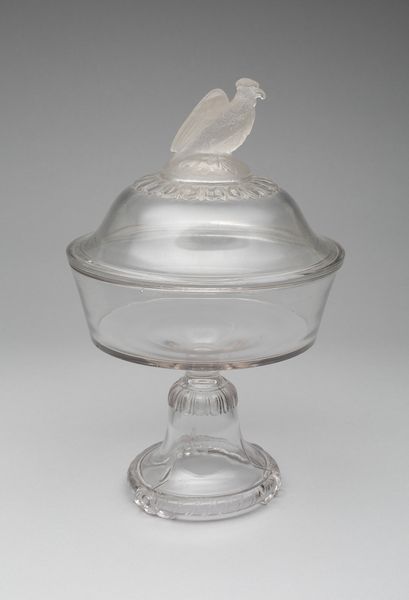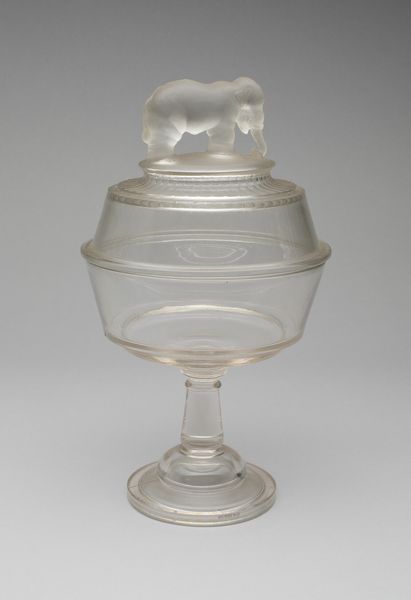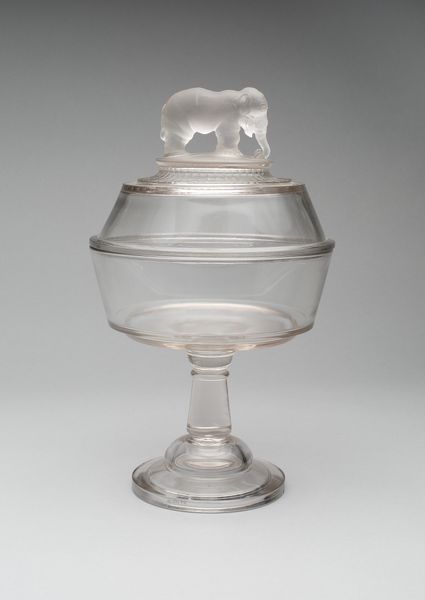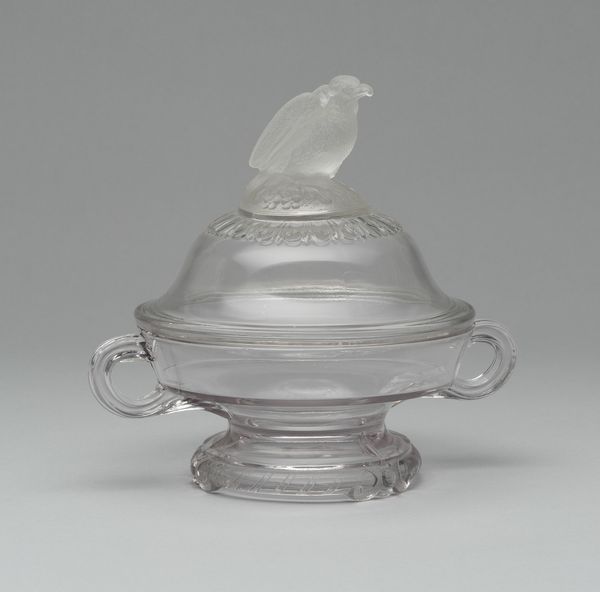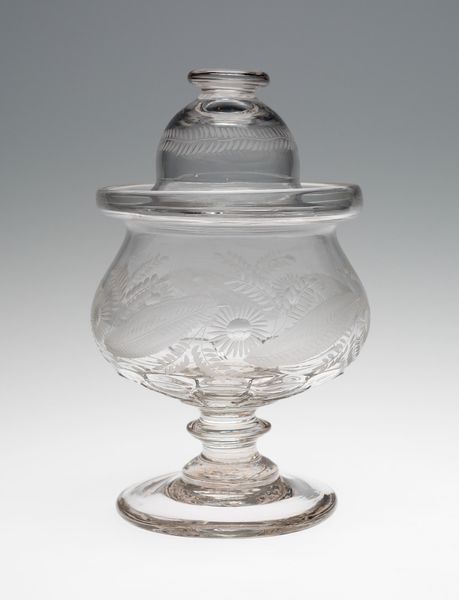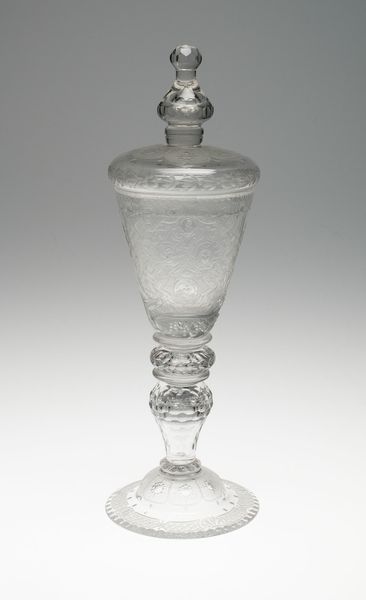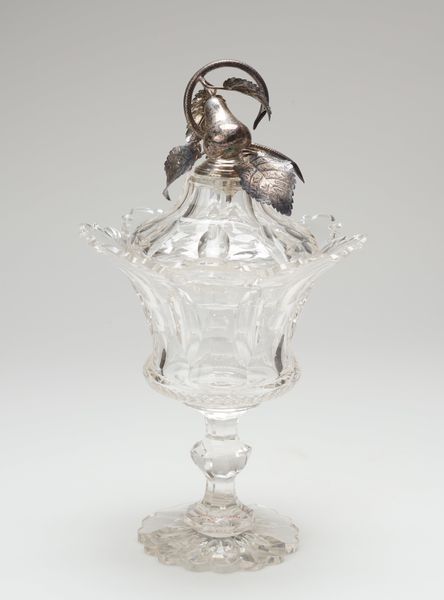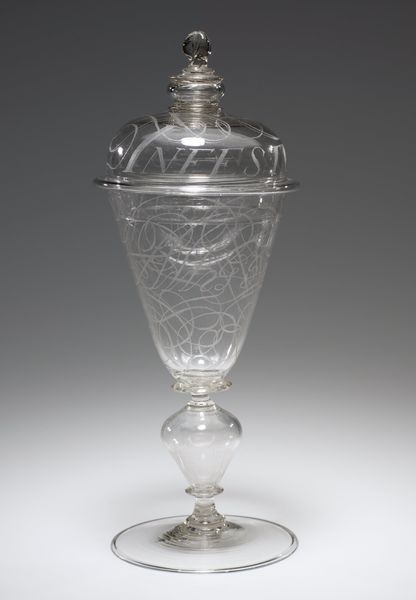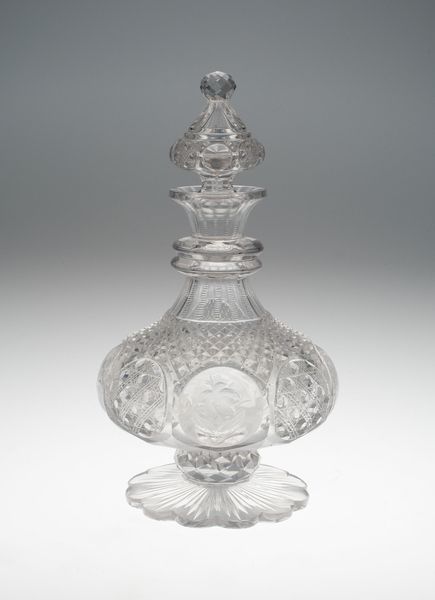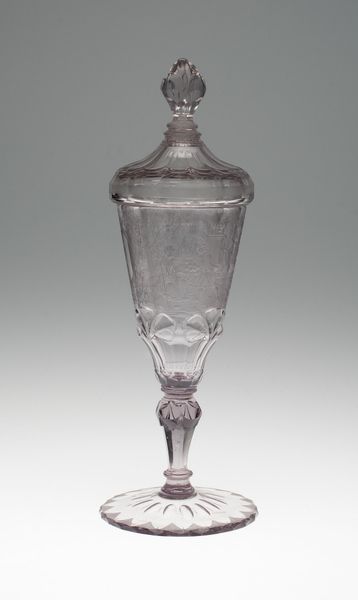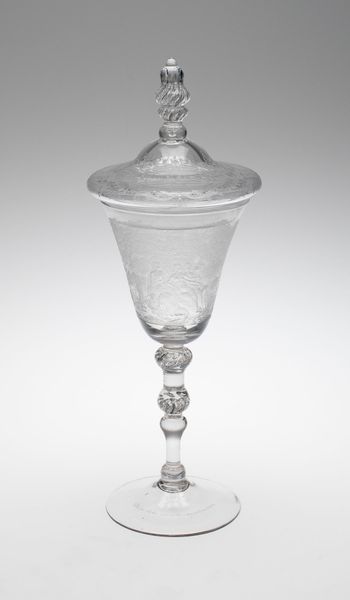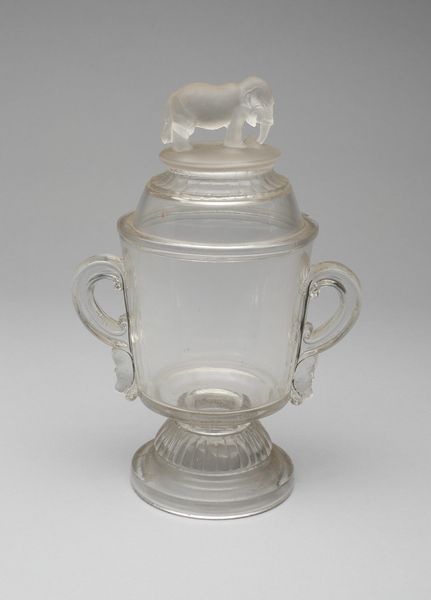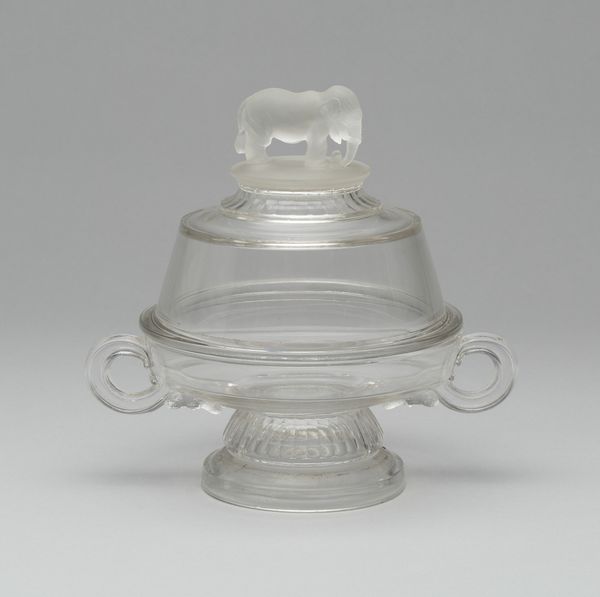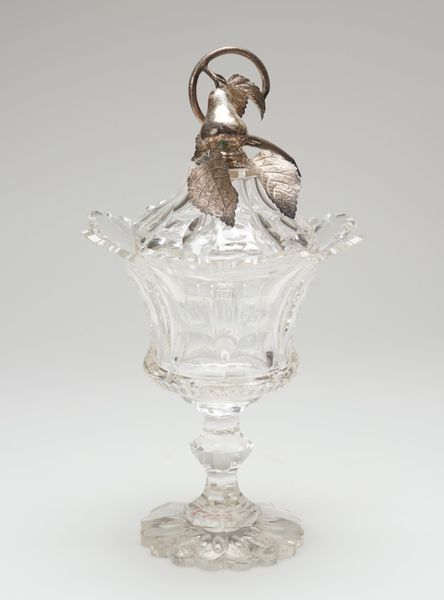
"Old Abe/Frosted Eagle" pattern covered compote on pedestal 1880 - 1890
0:00
0:00
glass, sculpture
#
glass
#
sculpture
#
decorative-art
Dimensions: 28.6 × 17.8 cm (11 1/4 × 7 in.)
Copyright: Public Domain
Curator: This elegant piece is titled "Old Abe/Frosted Eagle" pattern covered compote on a pedestal. It was crafted by the Crystal Glass Company between 1880 and 1890. Editor: My first impression is that it's surprisingly stark. It looks like ice sculpture more than a functional object, that eagle atop the lid is so dominant, almost daring. Curator: The eagle is, indeed, the key symbolic element here. It is rendered in a "frosted" finish, achieved through an acid-etching process, a contrast to the clear glass. It speaks directly to American nationalism in the late 19th century. "Old Abe" was the Civil War mascot of the 8th Wisconsin Volunteer Infantry Regiment. The piece ties decorative arts to larger cultural memories. Editor: Absolutely, that deliberate invocation of "Old Abe" anchors it so firmly in a particular socio-political landscape, just decades after the war's end. Serving dishes like this acquired new layers of meaning; displaying them became a powerful form of social expression. Imagine families gathered, sharing not just food but also silent nods to national unity—or division. Curator: It’s about claiming a very specific historical and patriotic lineage, right? Consider where this might have been displayed in a home—on a table, centrally located. An assertion of identity through domestic display. Editor: Exactly. And I can imagine the Crystal Glass Company recognizing this need to express national pride with accessible objects, turning something quite simple into a meaningful symbol. There's a clever tension between the patriotic symbolism and the piece’s very nature: glass being inherently fragile, despite its strength. Curator: This glasswork shows us how cultural values infiltrate the everyday and how objects can operate as quiet political statements. Editor: This piece does leave you pondering the public role of domestic objects. Thank you, the insight you provided opened this piece for me.
Comments
No comments
Be the first to comment and join the conversation on the ultimate creative platform.
